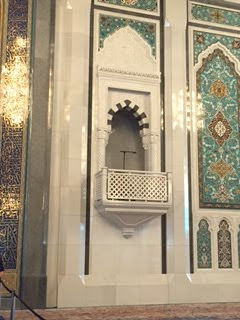
Our cabin attendant is a delightful, outgoing and very smart
woman by the name of Songezwa (song gez wah!)
Her name means “addition to the
family.” We call her Soso and she is
from South Africa. Soso is on a four
month contract and then goes home for two months returning to this ship or
perhaps the new Seabourn ship, Encore, which will have her maiden voyage next
December. Soso expects to be promoted
to Guest Services. She definitely has
the “Nordstrom” mentality of customer service and anticipating the guests needs
before we even ask.
Message to Grands......Every day Soso makes our bed! We are very spoiled!





















































